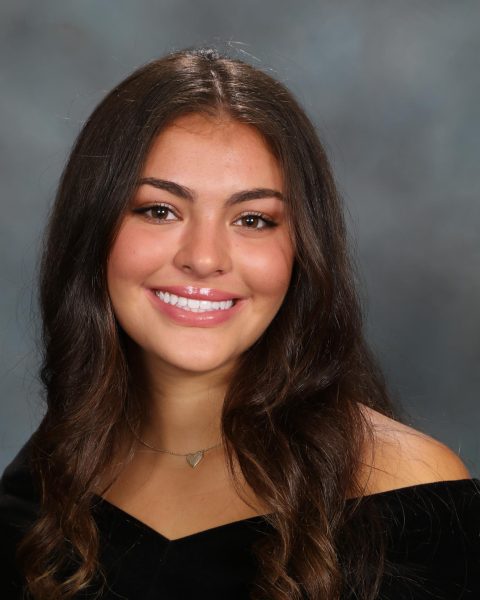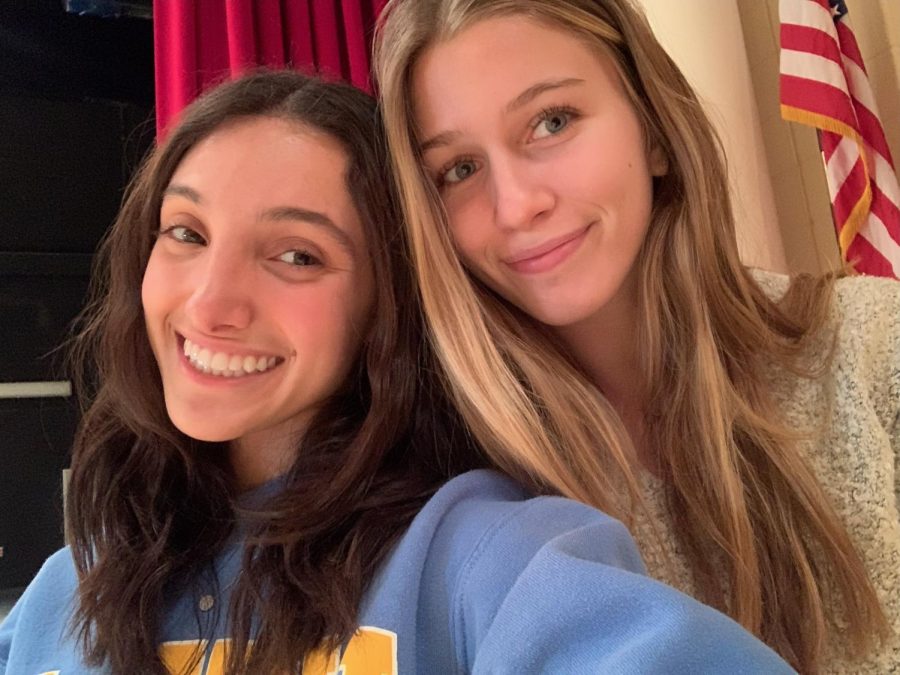An Interview with the Dr. Harriton Choreographers: Isabel Silverman, Camilla Trotti, and Ally Fenton
February 25th marks the 15th annual Dr. Harriton charity event, arguably one of the most paramount events in the Harriton community. The contestants put on four separate dances throughout the night, which would not have been achievable without the determination of this year’s choreographers: Isabel Silverman (junior), Ally Fenton (junior), and Camilla Trotti (senior). These girls have worked endlessly for months, over the weekend, over the phone, and in hours of practice to create eye-catching routines to engage the audience and make this year’s show the best yet. I sat down with the choreographers to learn about their overall experience and to gain an insight into the behind-the-scenes workings and preparation for Dr. Harriton.
The Harriton Banner: What is the hardest part about choreographing for Dr. Harriton?
Isabel Silverman: The hardest part about choreographing for me is not getting sidetracked and joking around with the group.
Ally Fenton: All the contestants are just too great of dancers that they make our jobs too easy for us.
Camilla Trotti: The hardest part about being a choreographer for Dr. Harriton is time management; it is hard to determine when all the dances should be choreographed since we can’t predict how quickly the contestants and partners will pick up on the dances. The job requires a lot of time outside of school in order to have everything organized and well thought out.
THB: What made you want to be involved with choreographing for the show?
IS: The reason as to why I wanted to be a choreographer for Dr. Harriton was because I’ve never done any school sports, since I don’t play basketball, tennis, soccer, etc., and I’ve always wanted to participate in a team activity for school. I’m a dancer, so being given the chance to choreograph for Dr. Harriton was the best opportunity for me.
AF: I’ve tapped-danced competitively my whole life and I do theater, but I’ve never had the opportunity to create stuff from scratch, so that was certainly very alluring.
CT: I have always been a fan of the show, even when I was in middle school. Every Dr. Harriton show that I attended has never failed to put a smile on my face so I knew that I wanted to be a part of the show somehow. It makes me proud to be a part of such a great cause.
THB: What does a typical dance rehearsal for the show look like?
IS: A typical dance rehearsal for the show is warming up with a million jumping jacks (that everybody loves to do), running the dances, teaching new choreography, joking around for a bit, running the dances some more, and then “breaking it down” at the end.
AF: The schedule is pretty simple. 1. warm-ups 2. run through what we’ve learned during previous rehearsals 3. add on 4. repeat steps 2 and 3.
CT: A typical rehearsal consists of a lot of dancing. The contestants have been working on four dances since the end of November: one dance is 10 minutes long and the other three are 3-4 minutes long. The contestants have been doing really well over the course of three months and the dances would not be as good without their helpful tips and suggestions. Usually, we run 2 dances during rehearsal and we work hard on “cleaning” the dances as much as possible. Recently, we ran through all four dances and have been making final touches.
THB: What does the process for coming up with the dances look like? Do you create them beforehand?
IS: The process for coming up with the dances is on the weekends, the other choreographers and I usually meet up and come up with new choreography ahead of time. Other times, when we aren’t able to meet up, we then would come up with new choreography before rehearsal, or during breaks.
AF: I wish I could give you a dramatic answer and say that Isabel, Camilla, and I fight tooth and nail for what choreography goes into the show, but I lucked out and I have two great choreographers by my side. Usually, we either sit in my house or a practice room at school, play music, and dance.
CT: All the dances are choreographed beforehand. As I mentioned, the job requires a lot of time outside of school in order for everything to be ready for rehearsals. If the other choreographers and I cannot find time outside of school then we will work on choreographing during learn 1 and 2 in the practice rooms behind the auditorium.
THB: What is the best/most memorable part about being a choreographer so far?
IS: Honestly, there are so many memorable parts about being a choreographer, let alone, being a part of Dr. Harriton. But for me, it was the whole experience of creating a bond with the group. Before Dr. Harriton, I had never talked to any of the contestants, the partners, the other choreographers, or any of the team. But by this point, we became a community. Seeing it form throughout the past couple of months was such an amazing experience, and that will always stick with me.
AF: Being called “Fenton” for the first time in my life and getting to work with such talented people was really great.
CT: The best part about being a choreographer is watching all the dances come together. Once the dance is fully finished it is the most rewarding feeling.
I am very eager to see what these choreographers have put together for the show this year. Dr. Harriton is one of the school’s biggest fundraisers and proceeds from the show go to the Lower Merion Scholarship Fund and the Sean A. Hughes Children’s Trust. Tickets are limited this year so make sure to buy them now, as this will be a show you will not want to miss.

Hailey is a senior who is thrilled for her fourth year at The Banner, and third as the Harriton News Editor. Outside of the Banner, she is captain and...


